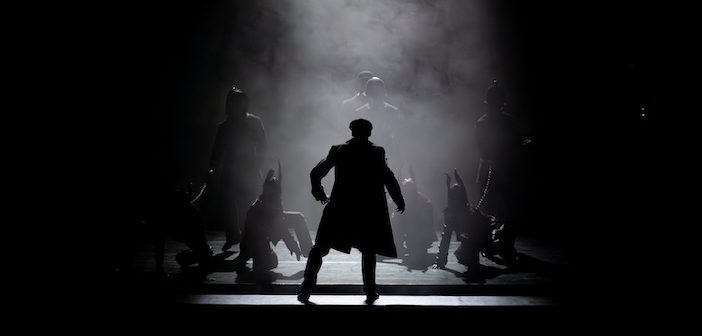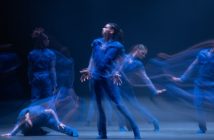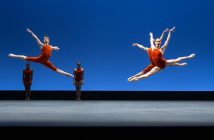It is decades since Rambert changed its name from “Ballet Rambert”, nailing its colours firmly to the contemporary mast. Since then, Rambert has tried out plenty of techniques and styles – Martha Graham, Glen Tetley, Christopher Bruce, Richard Alston, Siobhan Davies – and today Benoir Swan Pouffer who has transformed the Peaky Blinders TV series into something very like a “rock ballet” – always forgetting any suggestion of ballet, of course. This is dance, in fact, that is driven, challenging, exciting and always performed with conviction by this fine company.
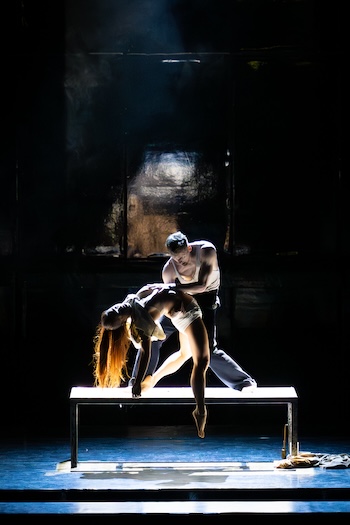 It is unusual for Rambert to perform a full-length story ballet (it’s just so hard to escape that word) – indeed, this is a rarity among most contemporary companies. But one based on a television series? It sounds unlikely. And yet there are several factors that pull this piece together.
It is unusual for Rambert to perform a full-length story ballet (it’s just so hard to escape that word) – indeed, this is a rarity among most contemporary companies. But one based on a television series? It sounds unlikely. And yet there are several factors that pull this piece together.
First, there’s the music. This is such a driven, pounding (and sometimes overloud) wall of sound that it propels the dancers through the story before your very eyes. Brilliantly performed by Mitchel Emms, Joe Downard and Yaron Engler, the musicians are mostly invisible but occasionally picked out in pools of light behind (sometimes with) the dancers. Those pools of light are rare – this is a dark production in every sense and the lighting (by Natasha Chivers) is moodily magnificent.
Another of those positive factors is the story itself. I didn’t watch the series but that didn’t matter at all. For one thing, it begins before the series does, in the trenches of the First World War, a psychological prequel to explain the state of mind of Thomas Shelby and his brothers – and if you don’t get it immediately from the trauma of the many dances of death on stage, there is the voice of the late Benjamin Zephaniah (he played a preacher in the series), explaining how so many who kept their lives lost their souls in Flanders Fields.
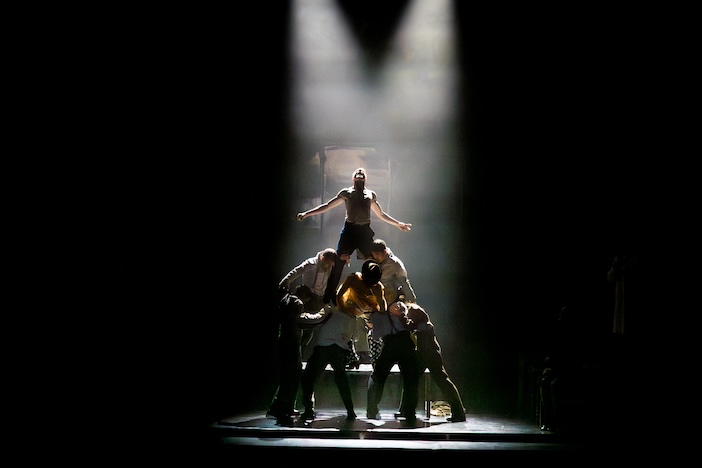
The stage is often bare and it’s surprising how the trench from WWI continues to be such a useful staging device throughout. People fall into it repeatedly because there is, of course, a lot of violence and death here. When it isn’t bare, though, Moi Tran’s sets and Richard Gellar’s magnificent costumes make this an ever-changing spectacular. This is a production that is simply a wonder to watch.
There is, though, also the plot, and at its heart (literally) is love: the romance and short-lived marriage of Thomas and Grace. On press night, they were danced by Conor Kerrigan and Naya Lovell, though other members of the company take on the roles at other performances. Lovell is not the sweet Irish singer of folk songs in the series, but a nightclub chanteuse in slinky green velvet. When we meet her, she’s as watchful as a leopard about to make its kill. Kerrigan is simply magnificent – violent, passionate, crazy but ultimately unfathomable, however many explanations the storyline offers.
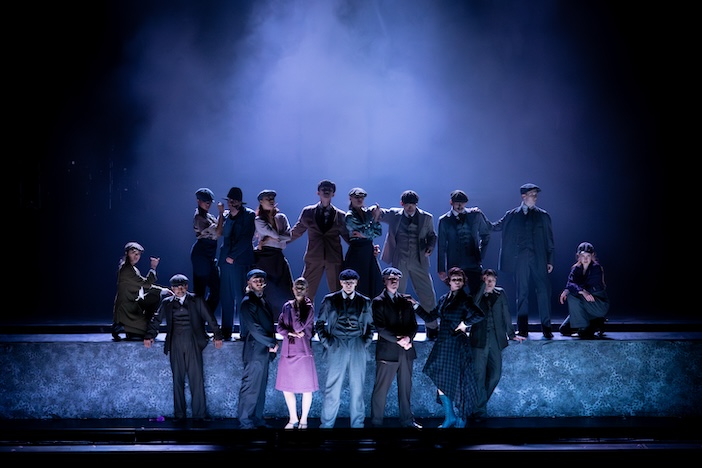
But then this entire company is superb and dances with conviction and fine characterisation moving from manic, often violent motion to still but menacing tableaux. The action moves at speed from nightclubs with sequinned dancers to an opium den, from police chases (with truly excellent dogs on chains) to bleak Black Country factories, all powered through by a mix of thumping rock, mixed with jazz, folk and classical in Roman GianArthur’s atmospheric score (and the programme gives an entire page to the many music credits). It’s an evening of dance that’s not quite like anything else around and atmospheric as hell – a place it conjures several times. Quite a night.
Rambert’s Peaky Blinders runs at Sadlers’ Wells until 16th August. For more information, and for tickets, please visit www.sadlerswells.com.
Photos by Beatrice Livet

